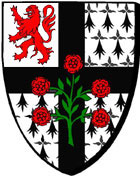
Encyclopédie Marikavel-Jean-Claude-EVEN/Encyclopaedia/Enciclopedia/Enzyklopädie/egkuklopaideia
 |
|||
| A | B | C | D | E | F | G | H | I | J | K | L |
| M | N | O | P | Q | R | S | T | U | V | W-X-Y-Z |
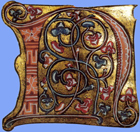
NNNNN
| pajenn bet digoret e 2001 | page ouverte en 2001 | Non actif |
Actif |
* forum Marikavel : Academia Celtica | dernière mise à jour 03/11/2024 à 18:24:16 |
![]()
A B C D E F G H I J K L M N O P Q R S T U V W X Y Z a b c d e f g h i j k l m n o p q r s t u v w x y z
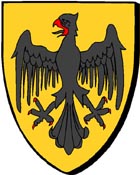 |
 |
Naab : rivière tributaire du Danube, en Bavière; autrefois *Nablis. |
 |
* Nabalia : désignation de l'estuaire septentrional du delta du Rhin. Aujourd'hui le Leck. |
 |
* Nabantia : nom ancien d'une rivière près de Coimbra, en Portugal. |
| * Nabarus Flumen : la rivière Naber; Sutherland, en Écosse. |
| Naber
: rivière d'Écosse, dans le Sutherland.
Autrefois Nabarus. - Ptolémée, II,3,1 : Nabaron Potamon ekbolai (= NABARI FLUVII OSTIA); variantes Nabaion (= NABAEI), Nauaion (=NAUAEI). ( |
 |
 |
Nablis : rivière tributaire du Danube, aujourd'hui la Naab, en Bavière. |
| Nantes, en breton Naoned (Condevincum):
(44000) chef-lieu de département de Loire-Atlantique, en
Petite Bretagne, sur la Loire. Capitale de la cité gauloise des Namnetes, sous le nom de Condevincum. Acquise par Erispoë, roi des Bretons sur Charles le Chauve, après la bataille de Ballon, en 851. Capitale de Bretagne sous Alain Barbetorte et ses descendants, de 937 à 988. |
| * Nassa : aujourd'hui le Loch Ness, en Écosse. |
| * Naurum : nom de lieu de G. Bretagne,
cité par Ravenna, 10826 : NAURUM.
Site non identifié, mais selon toute probabilité dans
le sud de la G. Bretagne. * Rivet & Smith, p. 423 : NAURUM (?) SOURCE - Ravenna 10826 (= R&C 241) : NAURUM Holder II. 692 and Loth suggest that Naurum is an error for *Natrum, assuming this to be the ancient name of the Wiltshire river Nadder. R&C reject this (and the identification) on the ground that 'There is no sound evidence that the Cosmography mentions inland rivers', and even though it now seems likely that there may be one or two in the text, it is probable that the Nadder was not important enough to warrant mention. An casier emendation would be to *Nau-(a)rum, with u for b. (via v), which has the advantage of producing in *Nabarus2 a second instance of a name which we already know existed in Britain. Against this, however, is the fact that in this section of his river-list the Cosmographer seems to be following fairly consistently an order of southern and south-western rivers, and in this region we know of no modem river whose name could derive (as would be expected) from *Nab- or *Nav-; moreover it is unlikely that at this point the Cosmographer is listing Ptolemy's Scottish Naver. A further possibility, and perhaps the best, is that Ravenna has here a gross corruption for the Alaunus recorded in the south-western region by Ptolemy, our Alaunus1. It is finally always possible that the Cosmographer (working from a map) has put a habitation-name among his river-names, as with Durolavi at 10837. IDENTIFICATION. Unknown, but apparently in southern Britain. |
 |
* Navio : station britto-romaine : Brough-on-Noe; Angleterre; Derbyshire. |
 |
 |
Neath : ville du sud du Pays de Galles; abbaye; mosaïques |
 |
* Nebrissa : nom ancien de la rivière Lebrija, en Espagne, province de Sevilla. |
| Nechtansmere / Dun Nechtain : bataille entre les Pictes et les
Northumbriens le samedi 20 mai 685. Le roi Ecgfrith de Northumbrie y est
tué.
Le site n'est pas réellement identifié et donne lieu à plusieurs hypothèses. |
| Nemagen (Ulpia Noviomagus) : voir Nimègue. |
| * Nemanturista (Nemantourista) : nom de lieu cité par Ptolémée, II,6,46, et désignant une ville des Pyrénées ibériques. |
| *Nemet- : racine celtique servant en toponymie, dans le sens = endroit sacré, sanctuaire. |
| * Nemetacum : nom gaulois latinisé d' Arras. * Nemetobriga : près de l'actuelle Pueblo de Tribes, Orense; Espagne. * Nemetocenna : nom gaulois d'Arras. * Nemetodurum : Nanterre; Seine; Ile de France. * Nemetostatio : station britto-romaine : North Tawton ?; Angleterre; Devon. ***** * Augustonemetum : Clermont-Ferrand; Puy-de-Dome; France * Drunemeton; Galatie. * Medionemetum : GB * Nemeto Statio; GB *Vernemetum : GB. |
? |
* Nemetobala : site non
identifié, à rechercher probablement, selon Rivet &
Smith, du côté du Gloucestershire ou Monmouthshire, c'est
à dire à l'embouchure de la Sévern. Proposition : Lydney, Gloucestershire SOURCE Ravenna 10623 (=R&C 50) : METAMBALA The form certainly needs emendation; we adopt that of R&C, but there can be no certainty that it is warranted. Loss of one or more letters at the start of a name occurs occasionally in Ravenna. We write the new form with medial -o- (R&C préserve -am-) because the analogues show this in other names which have *nemeto- as first element. DERIVATION. For *nemeto- 'sacred grove', see AQUAE ARNEMETIAE. R&C think that the second element could be *ambala 'navel', but this is hardly likely in place-names. They speculate also that -abala 'apple' might be involved, and cite Nennius on a freak apple-bearing ash-tree which grew at the mouth of the Wye; but on scribal grounds this emendation is hazardous, and the use of such an *abala as a second element in compounds is nowhere attested. It seems that we should first associate the present name with its only possible British analogue, Vindobala. Several roots bal- bail- are assembled by Ellis Evans in GPN 147-48, mostly in personal names which have bal (l)- with suffix or as first element in a compound. Of the various senses of these diverse roots, that in the name Balista in Liguria, perhaps 'white-peaked', is the most promising; possibly Celtic *balma 'pointed rock, peak', which must have existed in British in view of Welsh bal 'peak, summit', Breton bal 'steep beach, steep slope'. In the present name 'grove-hill' or 'hill-sanctuary ' would make good sense; but there can be no certainty of it. IDENTIFICATION. The position of the name in the list indicates a location in Monmouthshire or Gloucestershire west of the Severn; a possibility is therefore the sacred site, with a Roman temple in an Iron Age hill-fort, at Lydney, Gloucestershire (SO 6102). ***** |
 |
* Nemeto Statio : Angleterre; Devon. Aujourd'hui, probablement, North Tawton, en Devon. |
| Ness ( = Loch Ness) : aujourd'hui le Loch Ness, en Écosse. autrefois : Nassa. |
 |
Netherby : Angleterre; Cumberland. Ancienne forteresse romaine : Castra Exploratorum : camp des éclaireurs. |
| Nettleton Shrub : temple. |
 |
Neuss (Novaesium) : ville d'Allemagne de l'ouest (Rhénanie), sur le Rhin. Ville de la cité des Ubii, en Germanie IIè. |
 |
Newcastle upon Tyne / Pons Aelius : Angleterre; chef-lieu du comté de Northumberland. |
| New Forest : pottery. |
 |
Newstead : commune d'Écosse, comté de Roxburgh, sur la Tweed. Ancienne station romaine Trimontium. |
 |
Nice : |
| Nidderdale : lead |
 |
 |
* Nidum : station britto-romaine : Neath; Pays de Galles; Glamorgan. |
|
|
Nièvre : affluent droit de la Somme. Il prend sa source à Montrelet et rejoint la Somme à Flixecourt après un parcours de 18 km. Il arrose Canaples et Bertaucourt-les-Dames. |
 |
|
Nimègue / Nijmegen. (Noviomagus
Batavorum; Ulpia Noviomagus)
: ville des Pays-Bas (Gueldre), sur la rivière Waal. Oppidum,
puis ville romaine de la cité des Batavi, en
Germanie IIè.
-lieu de naissance d'Henri VI, empereur des Romains de 1191 à 1197 |
|
Nith
: rivière d'Écosse, dans le Dumfriesshire.
Autrefois Novius. - Ptolémée, II,3,E : Noouiou Potamon ekbolai (= NOVII FLUVII OSTIA); - Ravenna, 10818 : PANOVIUS; variante PANONIUS; - Ravenna, 10832 : NOVITIA; variante NOVICIA. It seems probable that these are
to be equated. Ravenna's entry at 10818
is in the group of diversa loca, and was hence
thought by R&C to represent a tribal meeting-place.
However, one other entry at least (Taba, 10819)
in this group is very plainly a river-name, and it seems
certain enough that -Novius is too. The DERIVATION. The name is precisely as in NOVIA. Watson CPNS 54-55 assesses the possibility that thé modem name Nith dérives from Novius; this seems likely, though 'one cannot be certain, as the name has passed from British through Welsh into Gaelic and thence into English'. IDENTIFICATION. The river Nith,
Dumfriesshire. |
 |
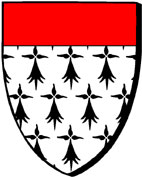 |
 |
Nivillac / Nivilieg: commune de la Bretagne historique, en Pays et évêché de Nantes. Aujourd'hui dans la région administrative non historique dite "de Bretagne", département du Morbihan, arrondissement de Vannes, canton de la Roche-Bernard, sur la Vilaine. | |
 |
* Nomentana : nom de l'une des portes antiques de Rome; aujourd'hui fermée. |
| Northamptonshire : iron-mining |
| Northamptonshire : whetstones |
| Northleigh : villa |
 |
North Tawton : Angleterre; Devon. ancien camp romain Nemeto Statio |
| North Tyne : water-mill. |
| Norton : |
 |
North-Waltham : Angleterre; comté de Hampshire. Probablement l'ancien établissement romain *VINDONIUM, au lieu dit Wheatsheaf Inn. |
 |
Northwich : Angleterre; comté de Cheshire. L'ancien camp romain de CONDATE, au confluent des rivières Dane et Weaver. |
 |
Noss Head : cap du nord de l' Écosse. autrefois : Verubium Promontorium. |
| Nottinghamshire : coal. |
| Notre-Dame d'Accu : lieux près de Montélimard; autrefois : ACCU (cf. Provincia, p 72) |
|
|
Nouvion en Ponthieu (Novionum)
: (80860) commune et chef-lieu de canton de la Somme,
arrondissement d'Abbeville, à la source du Dien (affluent
nord de l'embouchure de la Somme) La ville est située sur la route côtière gallo-romaine du gué de Blanquetaque à Quentovic et Boulogne-sur-Mer. Étymologie : Dauzat : Novionum, 718. Du gaulois Novio = nouveau, neuf + magos = marché. |
 |
* Novaesium : voir ci-dessus Neuss, en Allemagne. |
|
* Novantarum Peninsula : la
presqu'île Rhinns of Galloway, en Écosse. * Rivet & Smith, p. 426 : SOURCES - Ptolémée, II,3,1 : Noouantvn Kersonesos ( = NOVANTARUM PENINSULA); - Marcian, II,45 : Neouantwn Kersouneson; - Ravenna, 1087 : MEMANTURUM Marcian has evidently translated, or unconsciously adapted, original Nov-. Ravenna's entry bas not previously been placed in relation to Ptolemy's. Emendation to initial N- seems obvious (compare *Nemetobala), and is adopted also by R&C for their proposed *Nemanturum. There are indeed several names analogous to this, including personal Namanto, Namantius (Holder II. 674), the Nama(n)turi people of the Alps (Pliny NH III, 137), whom Holder thought Ligurian, and Nemantourista ( = Nemanturista, var. -issa / - issa) of Ptolemy II, 6, 46, a polis in the Spanish central Pyrenees. For these a base in *namo- *namanto- is proposed, for which a clue to the meaning is offered by Irish nama(e) 'enemy', although it is far from easy to see how such a meaning could be present in the names in question. The *Nemanturum of R&C may be correct and belong with these, but in principle it is better not to assign to a form recorded in Ravenna alone a root which is otherwise not known in Britain and (as shown above) of uncertain filiation. It is also the case that since many of Ptolemy's North British names were taken up by Ravenna — often in garbled form — we should consider whether a Ptolemaic entry lies concealed in corrupt form in Ravenna, for both drew ultimately from the same map-source. Hence Novantarum — which can be readily restored from miscopied Memanturum - seems thé best possibility here. The second part of the name, *Peninsula (or possibly *Promontorium), in abbreviated form and written somewhat apart, was overlooked by the Cosmographer as he read from his map. Such names as can be identified in this part of Ravenna are from widely scattered parts of Scotland, and do not bar us from considering the présent name as that of a western coastal place. DERIVATION. See NOVANTAE. IDENTIFICATION. The Rhinns of Galloway. ------------ Pour la localisation, voir la page consacrée au peuple des Novantae. Activer le lien ci-contre. |
|
* Novantarum Promontarium :
la cap Mull of Galloway, en Écosse. - Ptolémée, II,3, 1 : Noouantvn Kersonesos kai omwnumon akron ( = NOVANTARUM PENINSULA et eiusdem nominis promontorium); - Marcien : idem Ptolémée ----------- Pour la localisation, voir la page consacrée au peuple des Novantae. Activer le lien ci-contre. |
|
Novempopulanie : Ensemble géographique du sud-ouest de la Gaule aquitaine, entre la Garonne et les Pyrénées, capitale Elimberris / Auch. Incluant : Auch (Ausci), Dax (Tarbelli), Buch (Boii), Saint-Lizier (Consorrani), Saint-Bertrand de Comminges (Convenae), Eauze (Elusates), Béarn (Osquidates), Tarbes (Bigerrones), Bazas (Vasates), |
| *
Novia : nom de rivière de Grande Bretagne, dont Ravenna
donne deux écritures : NUBA (10634),
et NOVIA (10840). Rivet & Smith
proposent de l'identifier à la rivière Adur. -------------- NOVIA SOURCE Ravenna 10634 (= R&C 68) : NUBA Ravenna 10840 ( = R&C 267) : NOVIA At 10634 Ravenna is ostensibly listing habitation-names, but there is no guarantee that a few rivers have not been included among them (misread from a map); the next name, also 10634, almost certainly refers to the Trisantona1 river, which gives grounds for taking Nuba as a river. It is then inseparable from Novia, which figures properly in the river-list. The miscopying of b/v is very frequent in our texts because of their equation in Continental Vulgar Latin (Ad Novas AI 523 = Nobas of Ravenna 8o7, Ad Novas of TP = Nobis of Ravenna 735. Confusion of o/u scribally or in pronunciation was frequent too. DERIVATION. There is no reason to suppose that this river is to be associated in any way with Novus Portus, as R&C tentatively suggest. The name might just possibly be Latin, and refer to a river diverted through a 'new course' (in which event *Nova might be more correct). But it is safest by far to assume that rivers universally had British names even if unconscious latinisation has affected their recorded forms. If this is correct the name is British *nouia, a feminine of *nouio- (the base of the river Novius in Scotland) ; the fundamental sense of this is 'new ', but better perhaps ' fresh, lively ' when applied to water, for as Watson CPNS 54-55 says of the Novius, 'The reference is most likely to the freshness and verdure of the riverside'. Both Celtic and Latin Nov- names are common abroad. IDENTIFICATION. A river of Britain, placed in the list in the area of Sussex. Arun is TRISANTONA (q.v.) and Rother and Ouse are almost certainly non-Germanie in origin (Ekwall ERN, but see Jackson LHEB 195, 342), but Adur is more interesting. The modem name appears first in Michael Drayton's Polyolbion (1612) and is evidently a learned back-formation from the then-supposed site of Portus Adurni in ND. Its earlier name was Bramber and this is itself a back-formation from OE brember, 'bramble' (whence also the village of Bramber). Adur, then, is the most likely candidate. |
| * Noviodunum : nom celtique d'Isaccea, près de l'embouchure du Danube. |
| * Noviomagus : racine entrant en
toponymie, et signifiant globalement *novio =
nouveau, *magos = champ (de foire) > nouveau
marché. Des liens actifs sont placés en regard des noms cités séparément dans les cases suivantes. - Chichester : Noviomagus Regnensium; - Crayford : Noviomagus. - Lisieux : Noviomagus Lexoviorum, - Spire : Noviomagus Nemetorum, - Castelnau de Médoc : Noviomagus ... - Neumagen (Allemagne) - Nijon ? (cf Audinot) (Rivet & Smith) - Nimègue / Nijmegen : Noviomagus Batavorum , - Novion-Porcien, ? (cf Audinot) (Rivet & Smith) - Noyen-sur-Seine ? (cf Audinot) - Noyon : Noviomagus ..., - Nyons : Noviomagus ... - Saint-Germain d'Esteuil, ? (cf Audinot) - Soulac-sur-Mer ? (cf Audinot) * Rivet & Smith citent Holder (II.790) qui ne recense pas moins de 18 'Noviomagus' sur le Continent, la plupart en Gaule. NB : cette racine a parfois été confondue avec Noviodunum, qui a donné aussi Nyon. ------------------------- Sources : * L. Quicherat et A. Daveluy : Dictionnaire Latin-Français. Hachette. Paris. 1868. * A.L.F Rivet & C.Smith : The Place Names of Roman Britain. Batsford Ltd. London. 1979. Réimpression 1982. * Didier Audinot : Dictionnaire des cités disparues, en France, des origines à la Révolution. Éditions D. Audinot. 1997. |
| * Noviomagus : Castelnau |
 |
* Noviomagus : capitale britto-romaine : Chichester; Sussex. |
 |
* Noviomagus : station
britto-romaine : Crayford;
Angleterre; Kent. Site de la deuxième grande défaite britto-romaine face aux Jutes et Saxons, en 456-457. |
| * Noviomagus : Neumagen : |
| * Noviomagus : Nijon. |
| * Noviomagus : Novion. |
| * Noviomagus : Noyen |
| * Noviomagus : Noyon. |
| * Noviomagus : Nyons. |
 |
* Noviomagus Batavorum : aujourd'hui Nimègue / Nijmegen, en Pays-Bas. |
 |
 |
* Noviomagus Lexoviorum
: aujourd'hui Lisieux, Normandie, France. Capitale de la cité gallo-romaine des Lexovii. |
|
 |
 |
* Noviomagus Nemetorum : Aujourd'hui Spire / Speier, Bavière, Allemagne. |
 |
* Noviomagus Regnensium / Reg(i)norum : capitale de la cité bretonne des Regni : Chichester; Angleterre; Sussex. (voir aussi I.A Richmond, Roman Britain) |
|
Novius
: rivière d'Écosse, dans le Dumfriesshire. Aujourd'hui
la rivière Nith. - Ptolémée, II,3,E : Noouiou Potamon ekbolai (= NOVII FLUVII OSTIA); - Ravenna, 108,18 : PANOVIUS; variante PANONIUS; - Rravenna, 108,32 : NOVITIA; variante NOVICIA. |
|
* Novus Portus : nom de lieu de (G)
Bretagne, cité par Ptolémée, II,3,3 : Kainos Limen ( = NOVUS PORTUS). * cf Rivet & Smith, p. 428 : SOURCE - Ptolemy II, 3, 3 : Kainos Limen ( = NOVUS PORTUS) DERIVATION. The name is Latin, 'new harbour'; compare Magnus Portus (which Ptolemy also translates instead of merely transliterating). For similar descriptive names, see GABRANTOVICUM SINUS. IDENTIFICATION. As argued on p. 116, this almost certainly represents Dover as recorded in an early coastal survey. Rivet & Smith l'identifient à Dubris / Dover / Douvres (Kent). |

|
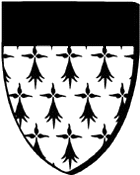
|

|
Noyal-Castillon-sur-Seiche / *Noal-Kastellan : Cette commune provient de l'association en 1993 des anciennes communes de Noyal-sur-Seiche et de Castillon-sur-Seiche |
|
 |
Noye : affluent gauche de la Avre. Il prend sa source à Vendeuil-Clapy, et rejoint la Avre à Boves, après un parcours de 28 km environ. |
![]()